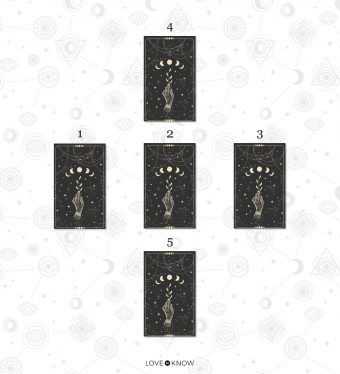
Perhaps you've had several tarot readings, are fascinated with the cards, and are ready to begin learning to read the tarot cards. If so, you'll enjoy this tarot guide for beginners. Reading tarot cards can be fun, entertaining, and uncannily accurate in giving advice. Still, it takes making friends with your tarot deck, understanding the cards and spreads, establishing rituals, and practice, practice, practice to become a tarot card reader.
Learn the History of Tarot
If you're new to tarot, the best place to begin is to learn a bit of history related to tarot cards. Unlike astrology, numerology, and runes, reading tarot cards was not practiced in ancient civilizations. Although beautifully illustrated tarot cards have been around for centuries, the wealthy first used them for games. It wasn't until about 1750 that tarot cards began to be used for divination.
Choose the Right Tarot Deck
When choosing a deck to begin your tarot journey, select a deck that feels comfortable for you and whose artwork resonates with you. Remember, your ultimate goal as a tarot reader is to create stories using the image symbols of the deck. There are hundreds of decks available, but many beginning tarot readers start with the Rider-Waite deck.
Understanding the Language of Tarot
All beginners should take time to get a basic understanding of how a tarot deck is arranged and its language, methods, and rituals before moving on to interpreting their own deck and its unique symbology.
Learn the Meaning of Each Card
There are 78 cards in a tarot deck, and each card has a different meaning. An excellent way to begin is to hold each card in your hand, study the imagery, and meditate on it. Once you've done this, shuffle the cards and then each day draw one card, write down what the imagery tells you in a tarot journal, then look up the traditional meaning of each card. Yes, this will take 78 days, but you'll be exercising your intuitive mind and building its strength before your first tarot card reading.
Tarot Card Spreads
Learn about the different tarot card layouts. There are many tarot spreads to choose from but, as a beginner, it's best to use simple layouts.
Traditional Five Card Spread
Five-card spreads are great to use because they embody trust in the universe's power and intelligence. This tarot spread is versatile and can be used for many topics such as love, relationships, career, money, travel, and more.

The card positions represent:
- Preconceived ideas
- The present
- The unexpected
- The near future
- The distant future
The Six Card Major Arcana Spread
The reading can be used for very important inquiries. Yet, it's also is an excellent reading to simply get a brief image of how you're generally doing at this moment in time.

The card positions represent:
- How you're now feeling about yourself
- Your greatest desire at this moment
- Your fears and anxieties
- What you have going for you
- What you have going against you
- The conclusion according to your current situation
Seven Card Horseshoe Spread
The Horseshoe Spread is an excellent tool for gaining a deeper understanding of a particular question or situation. It is straightforward and offers a thorough examination of one specific area of interest.

Positions of the cards represent:
- The past (can be either recent or distant)
- The immediate present
- The immediate future
- Current, pressing personal issue
- The attitude of a close person of importance
- Possible obstacles
- Result if guidance is followed
The 12-Month Spread
This is a wonderful spread to do at the beginning of each year, and it can give you clues to what each month will bring. It can also be used as a zodiac spread to analyze what you can expect in astrology's 12 areas of life.

The positions of the cards in this spread represent each month of the year. January is the number one card, February is the number 2 card, and so on to the number 12 card, which is December. As a zodiac spread, each card represents one of the 12 astrological houses.
Gaining Tarot Reading Experience
Tarot cards are a magical tool that anyone can learn to use. Still, it can be a bit overwhelming when first begin. Keep in mind that experience is the best teacher. Start by reading for yourself and then move on to your good friends before you begin reading for strangers.







